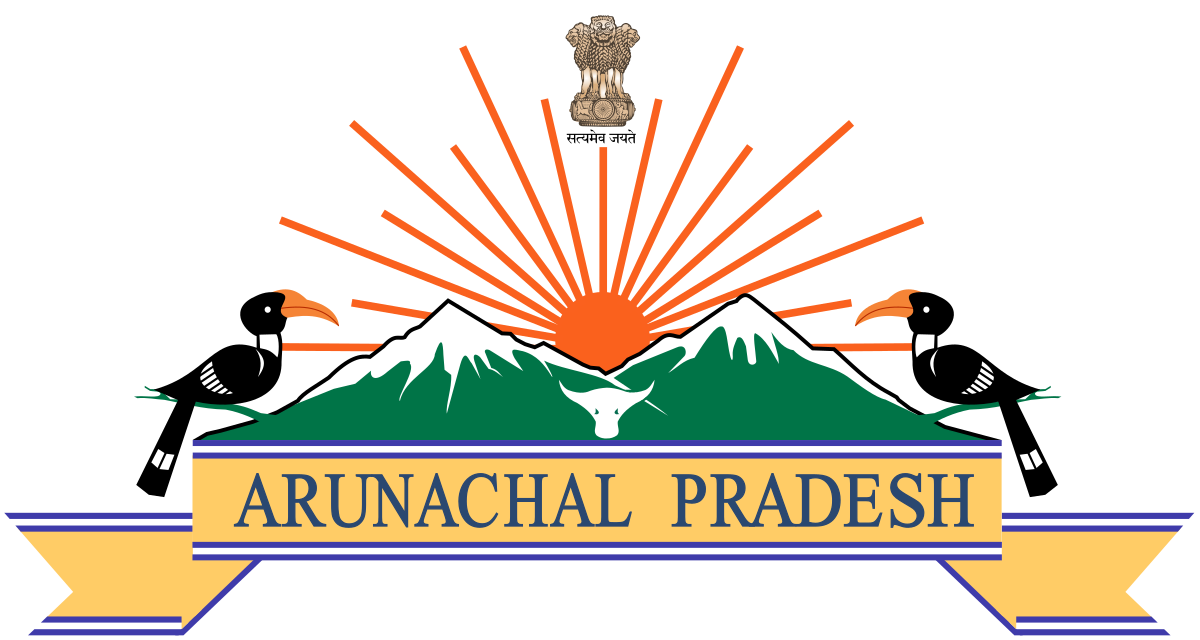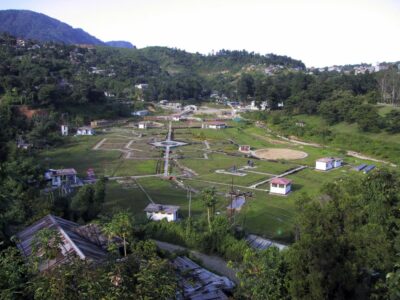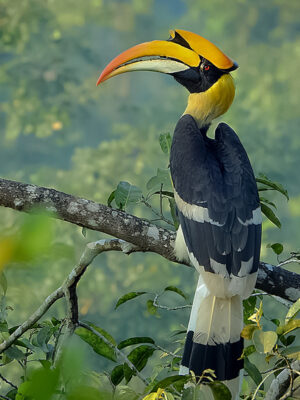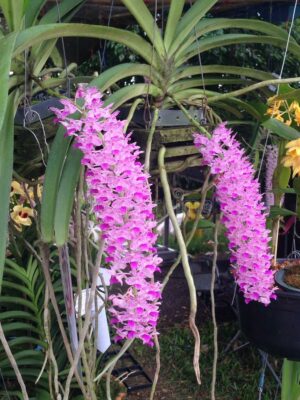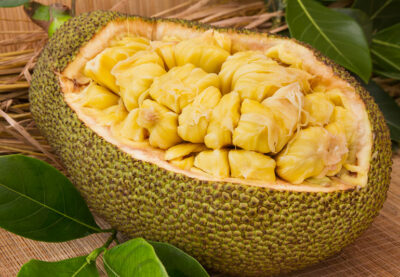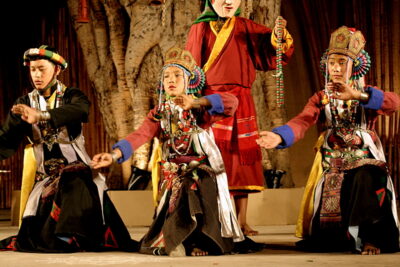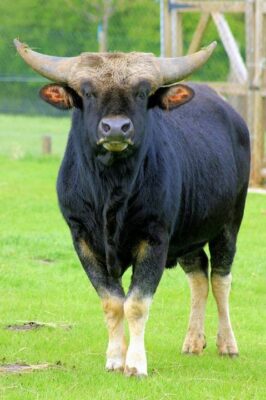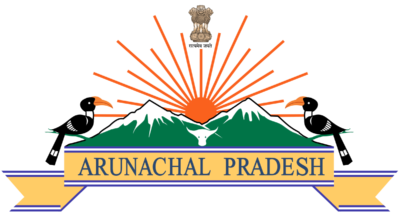State Symbols of Arunachal Pradesh
Last updated on January 21st, 2023 by Editorial Staff
By | Updated on January 21, 2023
Reviewed by Rittika
Arunachal Pradesh is the largest northeastern state in the country. The words ‘Aruna’ and ‘Achal’ imply the charioteer of the Sun God and Mountain, respectively which means “Land of the Rising Sun”. In India, the Sun appears first in this state.
Arunachal Pradesh, located in India’s far north-east, is bordered on three sides by independent countries and on one side by the states of Assam and Nagaland. Bhutan, Tibet, China, and Myanmar are to the west, northeast, north, and east of this state, respectively, while Indian states like Assam and Nagaland are to the south.
The capital of the state of Arunachal Pradesh is Itanagar. Shri Pema Khandu has been sworn in as the new Chief Minister and Brig. (Dr.) B.D. Mishra (Retd.) served as governor of the state of Arunachal Pradesh. Apart from Sanskrit, which is optional, Hindi and English are the main languages spoken in Arunachal Pradesh.
Demographic Profile
The geographic area covered is nearly 86 lacs per square kilometer with a literacy rate of 65.38%. According to Unique Identification Aadhar India’s latest report on May 31, 2020, the population by mid-2020 was 1,570,458; 1.6 million in 2021, and the population anticipated in 2022-23 is expected to be 1.9 million. The Sex ratio is 1084 females per thousand females.
Climatic conditions
Arunachal Pradesh’s weather and climate are considerably different from the rest of the country. The Himalayan system and altitudinal changes influence the climate of the state. At lower altitudes and in valleys covered in swampy dense forest, particularly in the eastern section, the climate is extremely hot and humid, while it becomes quite chilly at higher levels. Arunachal Pradesh has some of the country’s heaviest rains.
Natural Vegetation and wildlife
The fauna and plants of Arunachal Pradesh reflect the state’s unique terrain, climate, and soils. A vast belt of swampy rainforest runs along the foothills, covering almost two-thirds of the state. Lower elevations have tropical evergreen and subtropical pine forests (as well as subtropical mixed broad-leaved and pine forests). Woodlands give place to mixed and coniferous temperate woods as elevation rises. On the higher slopes, subalpine and alpine vegetation with rhododendrons predominates. Arunachal Pradesh also has a large number of medicinal plants, such as ginseng and yew, which are utilized by a large portion of the people for the treatment and cure of various maladies. There are more than five hundred bird types that have been acknowledged, many of which are critically endangered and only found in this state, such as the white-winged duck, Sclater, and Monal Bengal Florian, among others. Arunachal is evergreen because of its large trees, abundant climbers, and abundance of cane and bamboo.
Most frequently one can observe tigers, both varieties of leopards (clouded and snow), elephants, wild buffalo, medium-sized goats like serow (Capricornis sumatraensis thar) and goral goats, various species of deer, primates like hoolock gibbons, slow lorises, macaques, and capped langurs are among the mammals that live in the area. Red pandas, Bharals, kind of wild sheep, and bears (black), are among the animals that can be found at higher elevations. The state is also home to the uncommon musk deer and takin (Budorcas taxicolor). Arunachal Pradesh also includes a plethora of fish, several snake species, and hundreds of bird species.
Arunachal Pradesh’s state bird is the Great Hornbill, and its state animal is Gayal.
Economy
Arunachal Pradesh’s main source of income is agriculture. The state receives up to 500 cm of rainfall, which accounts for the region’s numerous rivers and lakes, as well as enormous woods, which have prompted the locals to practice ‘Jhum’ farming (a chunk of forest burned and used for cultivation). The farmers then move to another forest plot in the following years, giving rise to the term “shifting cultivation.” Jhum covers around 53% of the total planted land, with the rest under permanent cultivation. The type of soil varies greatly depending on the terrain. However, they are generally acidic and prone to erosion in hilly places. Inceptisols, entisols, and ultisols are the three major soil kinds. River valleys are known for their rich alluvial soils, which are ideal for agriculture.
Rice is the main crop due to abundant rain. Maize, millet, wheat, legumes, potato, oil seeds, and sugarcane are among the major crops. Arunachal Pradesh’s ecological parameters are ideal for the development of horticulture. Apart from it, oranges, guavas, pineapples, lemons, litchi, papaya, and temperature fruits such as apples, plums, pears, peaches, cherries, walnuts, and almonds are cultivated in abundance. The government has taken a few steps to diversify the agriculture economy to strengthen agro-horticulture activities.
Cultural life (Art, Music, and Cuisines)
The ancient culture of Arunachal Pradesh is well-known and is often known as ‘The Land of Dawnlit Mountains,’. The culture of Andhra Pradesh is mentioned in Indian classics such as the Kalika Purana and Mahabharata. Traditional craftsmen skills like weaving, carpet making, wood carving, painting, ceramics, ornament making, cane and bamboo work, smithy work, basketry, and many more crafts are practiced by local men and are passed on from generation to generation. Handicrafts and handlooms are among women’s specialties.
The two important traits of local tribal culture in AP are Dance and music. Aji Lamu, Chalo, Hiirii Khaniing, Popir, Ponung, Pasi Kongki, Rekham Pada, Roppi, Lion, and Peacock dances are some of the most prominent folk dances in Arunachal Pradesh.
Arunachal’s major foods are rice and beef. Green chilies, coriander, and ginger are used to prepare lettuce, which is quite popular among the natives. People eat boiled rice cakes, Thukpa, and momos, which are typical foods. Shawls, wraps, and skirts are among the traditional garments of Arunachal Pradesh. Adi, Aka, Galo, Nyishi, Bori, Apatani, Bokar, and Tangsa are the most important tribes of Arunachal Pradesh.
Tourism
In the Kalika Purana and the Mahabharata, Arunachal Pradesh is mentioned. There are places of devotion and visit, such as the Parasuramkund and Tawang Monastery, or archaeological excavation sites, such as Malinithan and Itanagar; Ganga Lake or Sela Lake, or the numerous variations of snow-clad silver mountain peaks and green meadows. Angling, boating, rafting, trekking, and hiking are also popular activities in the state.
Among the several tourist destinations in the state, Bomdila and Tawang are the most important. Near Bomdila lies India’s largest Buddha Vihar, which is a Mahajan Buddha Community pilgrimage site. This vihar’s Buddha idol is gold-plated. Snowfall is common throughout the year in this area. Itanagar is home to the famous Ita-Mahal and Ganga Jhil. Pilgrims bathing in holly during the ‘Chaitra Sankranti’ Fair in Itanagar. Apart from these, Malinithan and Bhismaknagar are historically significant tourist destinations. There was an 800-year-old stone palace in this location. One of the primary tourist attractions is the Parasuram Kund and Namdapha wild animal reserve forest Changlang.
State Information
| Official Language | English |
| State Rank | 14 |
| Demonym(s) | Arunachali |
| Nickname | Orchid state, Paradise of Botanists, Land of the rising sun |
| ISO | IN-AR |
| Formation Date | 20 February 1987 |
| Coordinates | Lat: 28.2180° N, Long: 94.7278° E |
| Area |
State seal
Motto of Arunachal Pradesh
Satyameva Jayate-"Truth alone triumphs"
State symbols of Arunachal Pradesh 👇
-
State capitalItanagar
-
State birdHornbill
-
State flowerFoxtail orchid
-
State fruitJackfruit
-
State treeHollong
-
State danceAji Lamu
-
State animalGayal
-
State dishChura Sabji
